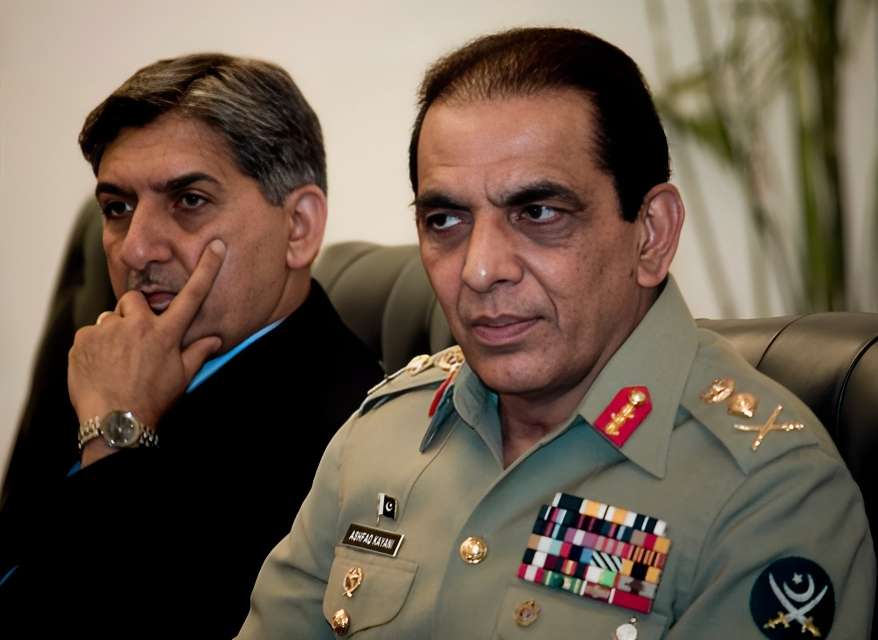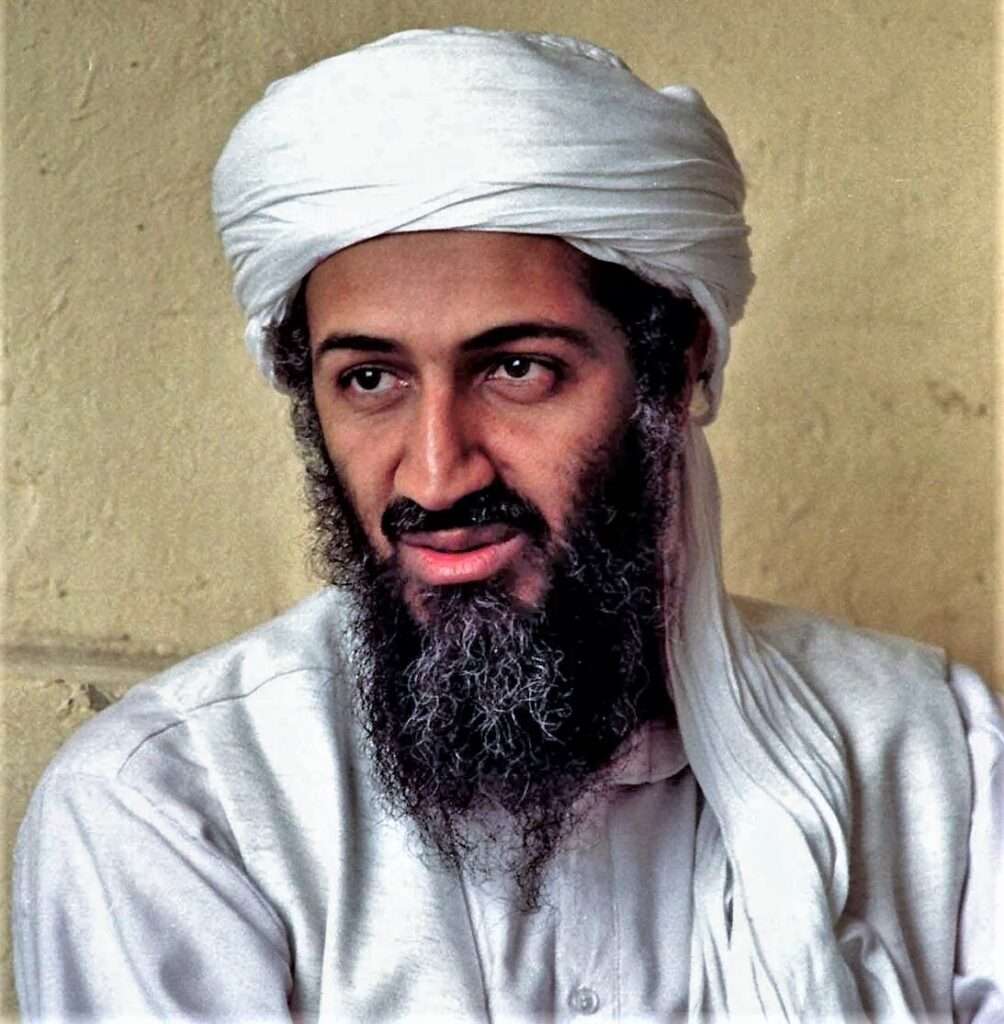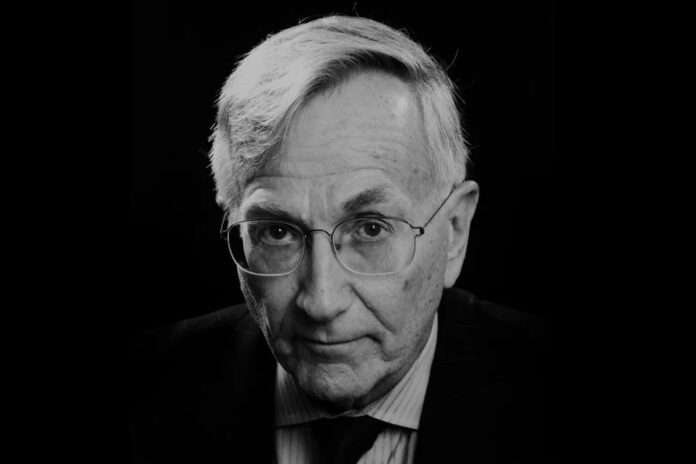Four weeks ago, veteran investigative journalist Seymour Hersh published an account of the killing of Osama bin Laden (OBL) in London Review of Books. Hersh disputes official versions of Pakistan and United States and claims a massive cover up. Hersh is a well known investigative journalist and his two most important works were uncovering of My Li massacre in Vietnam and prisoner torture at Abu Ghraib prison. However, some of his most recent works, especially the imminent U.S. attack on Iran have proved to be incorrect. In his recent work, Hersh admits that he doesn’t have any conclusive proof about his conclusions but believes his sources.
Hersh’s main sources of information include one retired senior U.S. intelligence official who only had knowledge about the initial intelligence about OBL and two consultants to Special Operations Command. Hersh gives the opinion of few others especially The New York Times reporter Carlotta Gall that she was told by a Pakistani official that Pasha knew about the raid and a Pakistani author Imtiaz Gul’s statement that four Pakistani intelligence operatives told him that they believed that Pakistani military must have knowledge of the operation although they had no proof. Hersh is not on a solid ground but rather on thin ice with these sources. However, there are many aspects of Hersh’s story which are true and he raises many genuine questions which are still unanswered. Answers of such questions about covert operations usually take decades but we are living in the age of Julian Assange, Private Bradley (now Chelsea) Manning and Edward Snowden and hope that we may find answers sooner than later.
Hersh’s main conclusions are:
CIA learned about OBL from a former senior Pakistani intelligence officer who betrayed the secret for the $25 million reward.
One retired Brigadier/Major General rank officer who served with Inter Services Intelligence (ISI) settled with his family in United States around that time period. However, many Pakistanis including army officers migrate to United States and Canada and though there is suspicion about this particular officer but no one is sure. All the evidence suggests that no one was sure about the identity of OBL and if true, it is most likely that this officer had some suspicion and he shared this with Americans. It is not clear whether he met the Americans in Islamabad or in Dubai but I am pretty sure that this officer had retired and was not serving at ISI at the time he contacted the Americans. There is some confusion about the events as Americans used some retired Pakistani army and police officers for surveillance of OBL compound. However, these officers had no idea about the identity of the resident of the compound. It has been suggested that this team was also moved out of Pakistan just before the launching of the operation.
OBL was a prisoner of ISI since 2006. He was in the Hindu Kush Mountains from 2001 to 2006 and ISI got hold of him by bribing local tribal people. However, Saudi Arabia paid for his upkeep. Pakistan wanted to keep OBL as a hostage to ensure that al-Qaeda and Taliban stayed in their own lane. If they deviated then Pakistan would hand over OBL to United States for some kind of a deal in future. Saudi Arabia wanted to keep OBL out of U.S. reach for fear of their own connection with OBL. Pakistanis were worried that Washington may learn from Saudis while Saudis were fearful that Washington may learn from Pakistanis.
If we believe this version of events then ISI officials, even if small in numbers from 2006 to 2011, some local tribesmen and members of Saudi royal family as well as U.S. officials were in the loop since 2006. Even if we keep it to a bare minimum considering compartmentalization of intelligence apparatus, it will still include at least several dozen individuals from three different countries. This is very unlikely and the weakest link is the local tribesmen. Tribesmen are selling the information to anyone who is holding the purse. Intelligence agencies of many western countries, Afghanistan, India, Saudi Arabia and Iran get all kind of information from local sources. After getting money from Pakistan, these tribesmen would be running to everybody and his cousin to get the mother load of cash for OBL information. OBL never trusted tribesmen on both sides of the Durand Line.
If Pakistanis were holding OBL as an insurance against al-Qaeda and Taliban attacks on Pakistani targets then this theory doesn’t hold any water. In fact from year 2006 to 2011, the Pakistani security establishment saw a string of very high profile attacks from al-Qaeda as well as the Taliban. The list includes bombing of an army recruiting center at Dargai in November 2006, bombing of a bus carrying employees of ISI in Rawalpindi in September 2007, bombing of a mess of Special Services Group (SSG) at Tarbela in September 2007, bombing of ISI regional headquarters at Peshawar in November 2009, bombing of ISI office in Multan in December 2009, bombing of police headquarters and ISI office in Lahore in May 2009, attack on army’s General Headquarters (GHQ) in Rawalpindi when General Kayani was in his office in October 2009 and in December 2009 militants attacked a mosque in cantonment area of Rawalpindi killing several army officers including a Major General, a Brigadier and two Lieutenant Colonels. In addition, a serving Lieutenant General (Surgeon General), former commander of SSG Major General Amir Faisal Alvi and Major General Muhammad Bilal were assassinated by militants. In a two week time period, militants targeted three serving Brigadiers in Islamabad area killing Brigadier Moinuddin Ahmad while Brigadier Waqar Ahmad Malik and Brigadier Sohail Ahmad survived the bullets of assassins. These are examples of only the high profile attacks on military installations and individuals and does not include countless bombings that killed hundreds of policemen, paramilitary forces and civilians. These facts simply demolish the myth that OBL was parked in Abbottabad by Pakistani army brass as leverage against al-Qaeda or Taliban.

Then Pakistan Chief of Army Staff (COAS) General Ashfaq Pervez Kayani and then DG ISI Lieutenant General Ahmad Shuja Pasha cooperated with Americans in the operation. They provided blood sample of OBL to Americans to confirm identity of OBL, provided all details of the compound, ensured no resistance, made sure that the SEALS helicopters reached Abbottabad without triggering any alarms and provided a liaison office for CIA at Tarbela Ghazi – a site of ISI covert operations. Pakistani cooperation in the operation included allowing two Chinook helicopters to park at ISI covert operation base at Tarbela Ghazi, a Pakistani ISI liaison officer accompanied the SEAL team in helicopter from Afghanistan and ISI guards of the compound were told to leave the compound as soon as they heard the noise of helicopter rotors.
If we accept this version then we have to accept that several dozen officers from the rank of army chief to sepoys guarding the compound were in the loop. Tarbela is where Special Services Group (SSG) has a base and to my knowledge there is no specific site at Tarbela for any activities or training of ISI. At different time periods, some small American technical teams were embedded with Pakistanis troops for signal intelligence and intercepting militant communications. If Pakistanis had already arranged everything for the Americans from confirming OBL’s identity with blood test, details of the compound, and a safe passage to all helicopters and sending all guards on furlough on the night of operation, do they still need to put an ISI liaison officer on the American chopper probably to give them directions. The man on the chopper was a Pushto speaking American posted with a SEAL outside the compound to speak to locals in their language in case anybody came inquiring about the action. It is most likely that even he didn’t know about the nature of the operation or the identity of OBL until the show was over.
Kayani only asked the Americans to bring in a small team and make sure to kill OBL. In addition, killing of OBL should be kept secret for about seven days and then a carefully crafted cover story should be released announcing that OBL is killed in a drone strike in Hindu Kush on Afghan side of the border. The reason being that Pakistan army wanted to use this cover because OBL was a hero to many Pakistanis.
I’m not convinced that Pakistanis wanted to embark on such a complicated course for such a flimsy reason.
Pasha told Americans that he could not keep OBL in the compound any longer as too many people in Pakistani high command knew about his presence. Head of air defense command and many local commanders were fully briefed by Kayani and Pasha about the whole mission.
Such type of sensitive operation cannot be kept secret if so many people are involved.
United States was able to get Pakistani cooperation by promising continuation of military aid, providing bulletproof limousines, security guards and housing for ISI leadership.
Pakistan was receiving billions of dollars over a decade and Pakistanis didn’t need to embark on such an adventure. The remaining conclusion about security guards and housing is simply laughable.
CIA and ISI engaged in public feuds to cover their assess. The outing of name of Islamabad’s CIA station chief Jonathan Banks in December 2010 most likely by ISI was preparation of a cover up months ahead of the OBL operation.
This is really a stretch of the imagination. Those who are familiar with U.S.-Pakistani military and intelligence relations of that time period know very well deterioration of relations on several fronts due to policy and personality clashes.
In the whole operation, only one stray bullet hit knee of OBL’s wife. Nothing was left of OBL’s body except head because SEAL team members shattered it into pieces with rifle fire. This was done before they left Abbottabad because they threw some of the body parts over Hindu Kush mountains during flight.
Facts from various sources do not support this conclusion. One doesn’t need to be an ordnance specialist to figure out how many rounds of ammunition will be needed to shatter a six foot tall human body with rifle fire. If true, then it means that after completing operation, SEALs put in hundreds of bullets in OBL’s body in Abbottabad and then collected all body pieces, put it in a body bag and during the return flight threw these pieces over the Hindu Kush therefore by the time they land in Jalalabad nothing is left to bury except bullet ridden head.
Pakistanis decided to cooperate with Americans when confronted with the news of presence of OBL. After the operation, Pakistani-American relations soured but then Pakistanis decided to cooperate because of the threat from ISIS.

When Americans confronted Pakistanis about the presence of OBL, the simple solution for Pakistan was to eliminate him. They could eliminate him and tell the Americans to prove it that it was in fact OBL. Hersh wants us to believe that the powerful ISI that is allegedly supporting every bad guy on the planet is not able to eliminate one of its own prisoners. Hersh’s assertion that Pakistanis decided to embrace the Americans again because of the rise of ISIS in Pakistan is stretching the truth to the extreme. No one with even rudimentary knowledge about Pakistan believes this claim. There is no evidence of any significant ISIS presence in Pakistan, let alone Pakistan army’s fear to a level that they came running back to Americans.
The only Pakistani source which Hersh used is former DG ISI Lieutenant General ® Asad Durrani. Hersh quotes Durrani’s interview with Al Jazeera that ‘it was quite possible that the senior officers of ISI did not know where bin Laden had been hiding but it was more probable that they did know’. In addition, Durrani agreed with Hersh’s version but confirmed only one aspect that there had been an informant who alerted to OBL’s presence in Abbottabad through second hand sources from Pakistan’s strategic community. To be fair to Durrani, he has given his opinion candidly while acknowledging that he doesn’t have any proof or convincing evidence. Two former DG ISI have given their own take on the subject. Former DG ISI Lieutenant General ® Khwaja Ziauddin is on record stating in an interview on 11 December 2011 that he is convinced that former Director Intelligence Bureau (IB) Brigadier ® Ijaz Shah was responsible for hiding OBL with the knowledge of General Pervez Musharraf. (https://www.youtube.com/watch?v=DThgijCy9gA)
Former DG ISI Lieutenant General ® Hamid Gul in an interview on 11 May 2011 with CCN stated that he believes that OBL died from natural death several years ago and Abbottabad operation was a hoax to help Obama’s re-election. (https://www.youtube.com/watch?v=dWw6NI0nSLw)
A few words about Pakistani officer corps for the uninitiated are a must to understand their statements and views. They are products of their society and like society they don’t trust official versions. In addition, society in general tends to view events through a conspiracy lens. The problem for officer corps is the choice between incompetency and failure versus collusion and there is no other option available. In my own conversations with dozens of officers of different ranks the score is fifty-fifty where half believe in incompetency while the other half believe that there was some element of collusion. Their opinion in either case is not supported by any convincing evidence.
I looked at one aspect in detail and that was Pakistan’s airspace issue. If the army high command asked the army and air force’s air defense to stand down to allow U.S. helicopters for the operation then some clues must be left in the wake of the operation. A senior Pakistani air force officer who was given access to all records of Pakistan Air Force (PAF) during that time period provided many details. He also had access to the PAF’s inquiry headed by an Air Marshal after the incident. No country can afford a radar coverage capability that covers all areas at all times. Pakistan’s assignment of radars is based on threat perception and categorization as a Vulnerable Area (VA) or Vulnerable Point (VP). Pakistan’s high level radars (2000 feet and above) have extensive and overlapping 24/7 coverage. However, low level radar coverage is severely limited and most of these radars are on the eastern border. Pakistan only had two low level radars in the area from where U.S. helicopters entered Pakistani airspace from Afghanistan. PAF’s low level radar coverage doesn’t extend to the Abbottabad sector as it is not considered a VA or VP in peacetime.
The flight paths of the two Blackhawks and two Chinooks were not traceable as they had taken a route that was either beyond the low level range of the two radars or were in the shadows of the surrounding hills. Blackhawk has stealth technology but Chinooks don’t have this capability. Chinooks avoided detection by flying in the valleys. In the final assault only the two Blackhawks ventured in while the Chinooks were stationed at Kaladhaka about twenty five miles from Abbottabad.
According to PAF records, both radars were functional, did not pick up any incoming track nor were subjected to jamming. All flight, local or from abroad operate only after filing a proper flight plan with the relevant authority. Any track that cannot be identified is declared as hostile and emergency action initiated. When initial news reached General Kayani, he rang up the air force chief to ask if there was any activity of PAF in the area. The only possibility would be night time flying exercise or a search and rescue mission. The PAF chief confirmed no such activity and activated the response. A pair of F-16s was scrambled from Sargodha base and specifically ordered by the Air Chief to shoot down any intruders. By the time the scrambled pair reached over Abbottabad the American choppers had already crossed over to Afghanistan. Some have suggested another scenario where the Americans informed General Kayani that they were launching an airborne operation in Waziristan against a high value target but then turned towards Abbottabad. In this case, Pakistan should have communication about the flight path of the choppers into Pakistani air space. However, there is no record of any such communication.
Hersh works for the New Yorker magazine but its editors were not convinced with the story therefore they didn’t publish it and London Review of Books chose to publish it. Seymour Hersh is a first rate investigative journalist and we need journalists like him who can hold the feet of those in power to the fire. However, no work is perfect and this story has many holes. It is nature of covert operations that only a glimpse is visible even to the well informed people and there will always be many unexplained chapters. Intelligence agencies create a façade of invincibility but in reality they are large bureaucratic organizations fully capable of royal blunders. Fifty years after the assassination of American President John F. Kennedy, there are many doubters and surely there will be many more in case of killing of OBL.
Acknowledgments
Author thanks many for their valuable inputs and clarifications, however all conclusions as well as errors and omissions are author’s sole responsibility.





